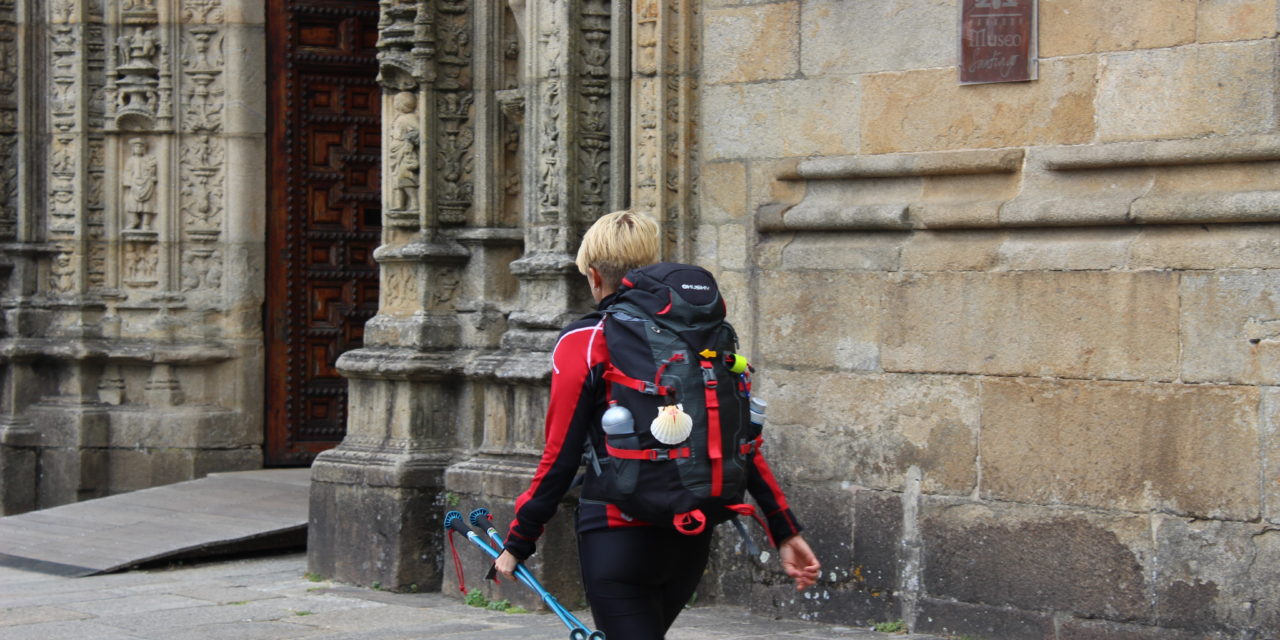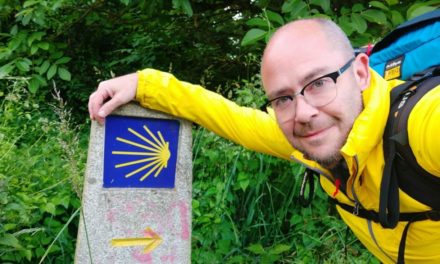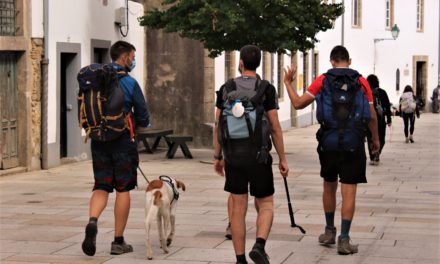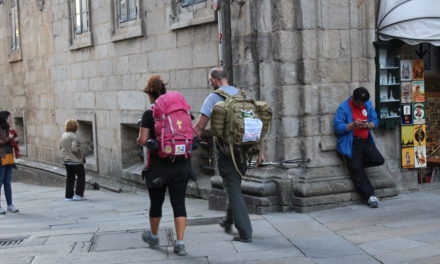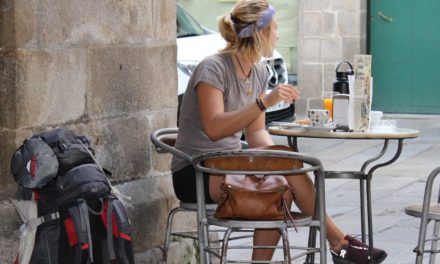Twenty years ago Julie read Shirley MacLaine’s book about the Camino de Santiago. She well remembers that time because she was pregnant with her daughter and she thought: “I want to do that”. But she was pregnant and was also a single mother, so she could not think of doing it at that time. However, the idea remained and she always thought she wanted to do the Camino. It was only a few years ago, in 2014 or 2015, when she decided it was time, she said to herself: “I’m going to do it now, a whole month”. Then she began to get informed and, finally, decided that she would devote five weeks to it.
She likes walking and she usually does it in Australia. She has dogs and she walks a lot with them, but she was not used to walking with a backpack or to the mountain slopes … Even so, at no time was she afraid of that. Her camino began at the end of September, from Saint-Jean-Pied-de-Port, and so it ended in November. The weather was cold and she found many places closed, it was a hard Way.
She came to the Camino alone, somewhat excited, but without fear. She walked with people but also a lot of time alone, she thinks that she probably walked sixty percent of the time alone. Two years after that first Camino she travelled the Camino Norte and Camino Primitivo, very hard but beautiful roads, she particularly loves the Camino Primitivo.
Now she has just traveled the Portuguese Way from Fatima.
From her experiences she recommends all roads, although she recognizes that she loves the mountains, so although she would recommend any of the routes, she prefers those that allow her to walk through mountainous areas.
On her first Camino she had some problems with one knee, for that reason she had to stop for a couple of days. But then she carried on and everything went well. She learned to walk at her own pace, and stopped trying to keep up with others. That was an important lesson that she believes is always learned in the first days or weeks.
What most interests her about an experience like the Camino de Santiago is that it allows her to be in contact with things that are very important to her: namely, nature and history. She is not a religious person but she is interested in history and culture. In Australia you cannot visit churches and monuments as you can on the Camino. On the Camino she can and she loves history. The differences between Spain and Australia are important part of interest in the Camino. For example, nature is also very different, at home you walk along the beach but here you can walk through the forests and mountains. In addition, the Camino allows you to feel and understand how strong it makes you, after traveling the Camino you always feel strong.
She remembers that at the end of her first Camino, when she arrived in Santiago she did not feel very happy, so she decided to continue walking to Fisterra and Muxía. Here she felt good, in Fisterra she found what for her is the real finish. Finisterre is the ultimate ending for her. However, on her second Camino she felt good in Santiago, happy to be there, and she stayed a few days to travel and get to know the city.
Regarding the roads she has travelled, she finds the experience of walking in Spain or Portugal very different. She enjoys these differences, and being able to know different cultures and landscapes.
On this recent Camino she felt very well, she could walk fast, her body adapted quickly to walking and she felt strong. What happens on the Camino is very unusual, you feel that your body is working well – you walk six hours a day but you feel very good. Also this time she has been through a much more solitary experience than at other times. If on the French Way she walked sixty percent of the time alone, in the Primitivo she spent much more time with others, but this time, on Portuguese Way, she reckons that she will have walked ninety percent of the time alone. But it was her choice. She found people, made friends, but almost always chose to walk alone.
On the Camino she has learned that there are strong people, just as there are strong animals, and that you can be strong too.. Once she sat exhausted with her backpack beside her and an older, very strong man, about 80 years old, grabbed her backpack and said: “come on, let’s go”. She kept walking with him, they had no common language between them, but they kept on walking together. She admires and loves those older and stronger people whom she meets on the Camino, there are fantastic older and stronger women. Those people tell her that it’s amazing because she comes from so far away, but she admires them and would like to be like them when she is their age.
For her to walk is to feel free, to let things happen, that is why she tries not to organize too much. The only exceptions are when there is a specific place that she wants to go to, or when she knows that there will be many people.
He likes private hostels or places where she can sometimes have her own room and a bathroom. She does not always have patience with hostels and large dormitories. This has marked a change in her caminos. For example, in this last one, she wanted more comfort and did not need to be with other people, so she could set her own pace. She has just spent a month almost entirely alone, but she liked it.
In Australia she has a beauty salon and a lot of social life, she meets many people every day … Maybe that’s why she likes solitude on the Camino, she likes to meet people from all over but does not need too much contact; in fact, also in her house she needs a space for herself, that is why she goes out to walk alone with her dogs. And speaking of the need for solitude, she believes that one fantastic aspect of the Camino is that everyone understands and respects each person’s choice to be with others or to be alone. In life you have to be always available or people get angry and stop calling you, on the Camino it’s not like that.
Regarding the spiritual aspect, she remembers that when she was walking her first Camino a friend of hers died of lung cancer in Australia. Just before her friend’s death, Julie had shown her a photo of the archangel Michael. Then Julie sent it to her and a few hours later her friend died. When, later, she was walking the Primitive Way she meditated a lot, now too at Fatima. She walks and while walking she thinks of people like her beautiful brave friend and very special family members, she feels closer to them on the Way. On the Camino she has greater access to these kinds of emotions. She can share her journey with those who are not here anymore, and feel that she is telling them what she is seeing. So that in this way it becomes a shared experience. In this sense, the Way helps her to accept death.

